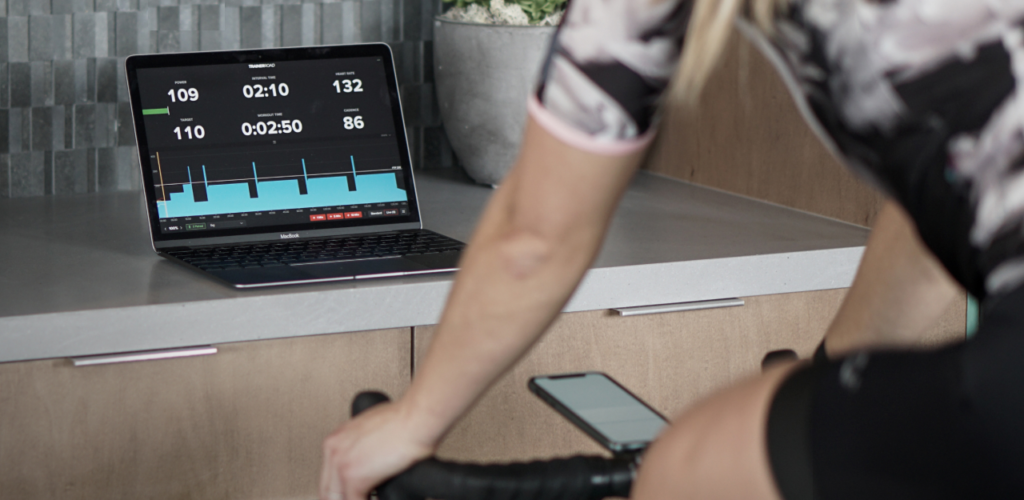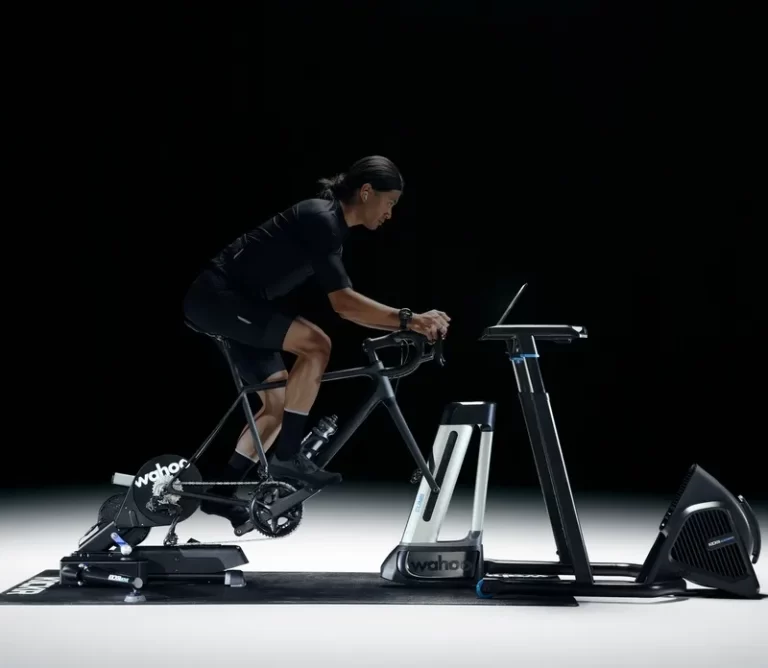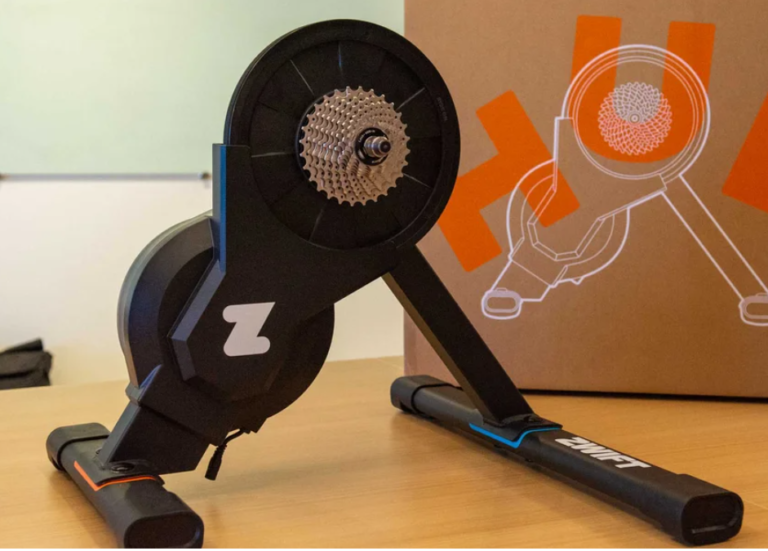Using Virtual Training Apps with Indoor Bike Trainers

Key Point Summary of Using Virtual Training Apps with Indoor Bike Trainers:
- Virtual Training Apps Revolutionize Indoor Cycling: Apps like Zwift and TrainerRoad transform indoor training by simulating outdoor environments and offering structured workouts.
- Compatibility and Setup: Ensure your indoor trainer is compatible with these apps for a seamless experience.
- Engagement and Community: Virtual platforms offer social interaction and competition to keep motivation high.
- Training Efficiency: Tailored workouts and data analysis help you focus on specific cycling goals.
- Accessibility for All Levels: Beginners to mid-level cyclists can find value and improvement in their cycling abilities.
As a masters cyclist with years of experience racing and riding across mountain, gravel, and cyclocross disciplines, I’ve seen firsthand the evolution of training methods and the pivotal role technology now plays in our sport. The advent of virtual training apps like Zwift and TrainerRoad, coupled with the convenience of indoor trainers, has revolutionized the way we train, making it more engaging, effective, and fun than ever before.
The Game-Changer: Virtual Training Apps
Gone are the days when indoor training meant staring blankly at a wall while pedaling to nowhere. Virtual training apps have transformed this once monotonous activity into an immersive experience. Zwift, for instance, allows you to ride in virtual worlds, from the streets of London to the mountains of Watopia, making each session an adventure. On the other hand, TrainerRoad focuses on structured training plans that are scientifically designed to improve your fitness and performance.

My journey into the virtual cycling world began a couple of years ago when I first mounted my trusty cyclocross bike onto a smart trainer. The initial draw was the convenience of training without having to deal with the unpredictable weather or the hassle of traffic. However, what truly captivated me was how these platforms made training a social event. Joining group rides or competing in races against cyclists from around the globe not only pushed me harder but also expanded my cycling community beyond my local roads.

Setting Up for Success
One of the first hurdles to embracing virtual training is ensuring your equipment is compatible. Most smart trainers easily pair with these apps via Bluetooth or ANT+, providing a seamless connection that not only tracks your performance but also adjusts the resistance to mirror the virtual terrain. My advice? Invest in a direct-drive trainer for the best experience, though wheel-on trainers also do the job well, especially for those just starting out.
Another aspect I appreciated was the ability to use my own bikes on the trainer. Whether I’m training for a gravel race or keeping my legs in shape for cyclocross season, being able to train on the specific bike I’ll be racing on has been invaluable. It allows for a level of specificity in training that traditional stationary bikes simply can’t offer.
Engagement Beyond the Physical
What sets virtual training apart is its ability to engage you mentally. Riding through Zwift’s virtual landscapes or chasing a personal best in TrainerRoad’s workouts offers a level of interactivity and fun that traditional indoor training lacks. There have been days when the only thing that got me on the bike was the prospect of exploring a new route in Zwift or completing a challenging workout on TrainerRoad that would push me closer to my goals.
Moreover, the social aspect of these platforms can’t be overstated. Participating in group rides or races has not only been a source of motivation but also a way to connect with fellow cyclists. It’s a unique blend of competition and camaraderie that makes each session something to look forward to.
Focused Training, Real Results
The structured training plans offered by apps like TrainerRoad have been a game-changer for my performance. Tailored to my fitness level and goals, these workouts have helped me improve my power output, endurance, and overall cycling efficiency. The ability to track progress over time and adjust the training intensity based on real-time feedback has made my indoor sessions incredibly productive.

Accessibility and Encouragement for Every Cyclist
Whether you’re a beginner just dipping your toes into the world of cycling or a seasoned rider looking to elevate your training, virtual training apps offer something for everyone. The key is to start where you’re comfortable and explore the features and workouts at your own pace. The goal is to improve and enjoy the journey, not to compare yourself to others.
Using Virtual Training Apps with Indoor Bike Trainers: Wrapping Up
In conclusion, the combination of virtual training apps and indoor bike trainers has transformed indoor cycling from a mere off-season alternative to a vital component of modern cycling training. It’s made training more accessible, efficient, and enjoyable, offering a platform for cyclists of all levels to connect, compete, and improve right from their living rooms. It’s an exciting time to be part of the cycling world, and I wholeheartedly encourage everyone to give virtual training a try. Whether you’re training for your first century ride, looking to stay fit during the off-season, or aiming to climb the ranks in virtual racing leagues, these platforms offer an engaging way to reach your goals.
Virtual training apps and indoor bike trainers are not just about staying fit; they’re about enhancing our cycling experience, pushing our limits, and connecting us with a global community of cyclists. So, clip in, log on, and let’s ride together into the future of cycling training.

Garmin Tacx NEO 2T Smart Trainer is distinguished as an exceptional indoor bike trainer, notable for its seamless integration with leading cycling apps like TrainerRoad and Sufferfest. This trainer is celebrated for its whisper-quiet operation and the ability to provide a ride free of vibrations, enhancing the realism of training across varied terrains. Designed to accommodate a broad spectrum of bicycles, it also mimics the experience of cycling over textured surfaces such as gravel, making it an ideal choice for cyclists seeking a deeply engaging indoor training experience.
Enjoy Your Training!
John
FAQ

Can I use peloton app with a trainer?
Yes, you can use the Peloton app with a trainer, but you’ll need a compatible bike or trainer setup that can track your workouts.
Which indoor bike trainer works with Strava?
Many indoor bike trainers, including models from Wahoo, Tacx, and Elite, are compatible with Strava, allowing you to automatically upload your workouts.
Can I use an indoor bike with Zwift?
You can use an indoor bike with Zwift, provided it’s a smart bike or a trainer setup with the necessary sensors to track and transmit your cycling data.
How do you track distance on an indoor bike trainer?
To track distance on an indoor bike trainer, use a speed sensor attached to your bike that communicates with your training app or device, converting your wheel’s rotations into distance traveled.






